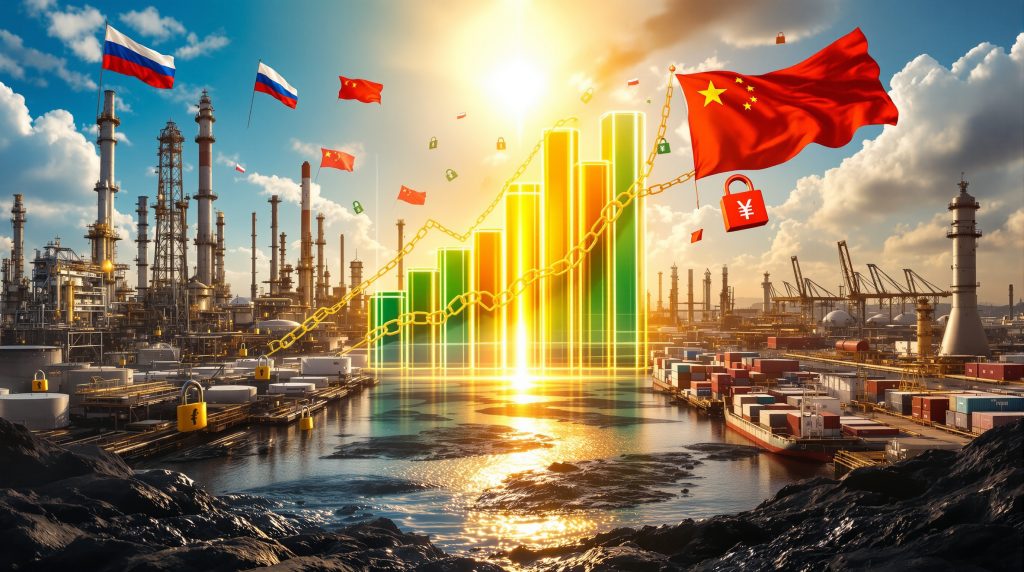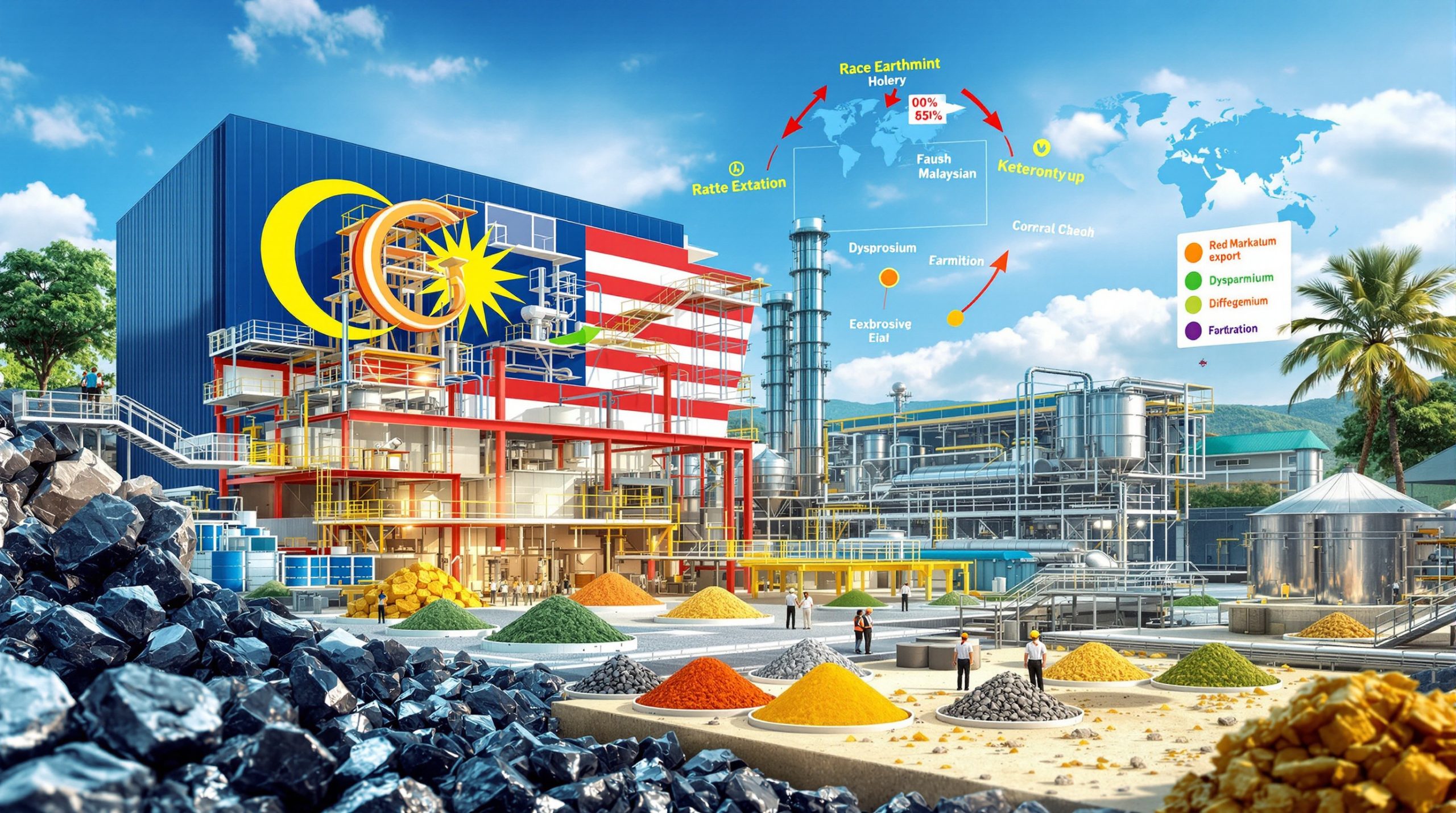The Strategic Architecture of Modern Energy Sanctions
The deployment of comprehensive financial restrictions against major petroleum exporters has evolved into a sophisticated geopolitical instrument designed to disrupt revenue streams that fund military operations. These measures target operational capacity through asset freezes, transaction prohibitions, and subsidiary blockades, fundamentally transforming global supply dynamics and pricing mechanisms. The October 2025 U.S. sanctions on Russian oil companies represent the most extensive targeting of Russian energy infrastructure implemented to date, encompassing roughly 3 million barrels per day of crude oil exports according to Russian business daily Kommersant.
This volume significantly exceeds the International Energy Agency's projected global surplus of 2.35 million barrels daily, potentially rebalancing markets instantaneously. Unlike previous measures, these restrictions specifically target dollar-denominated transactions and U.S. financial system access, creating substantial barriers for international buyers who rely on American banking infrastructure for energy trade settlements.
Unprecedented Scale and Scope of Current Restrictions
The latest round of U.S. sanctions on Russian oil companies demonstrates an unprecedented breadth that distinguishes it from previous enforcement actions. Russia exports approximately 4 million barrels of crude oil daily, with Rosneft and Lukoil together accounting for roughly half of the country's total outflows. These sanctions effectively ban as much as three-quarters of Russian oil exports to anyone utilizing U.S.-dollar-based payment systems and American financial infrastructure.
The Treasury Department's language creates particular complexity, stating that financial institutions and other persons may risk exposure to sanctions for engaging in certain transactions with designated entities. This phrasing, as analysed by the Wall Street Journal, suggests potential loopholes that sophisticated buyers might exploit, particularly Chinese and Indian financial institutions that cannot survive without access to U.S. banks and dollars.
Market Response Patterns
Oil prices initially spiked 6% immediately following the announcement but subsequently stabilised, suggesting markets assessed actual supply disruption potential rather than theoretical maximum impact. Vandana Hari from Vanda Insights noted that crude oil levelling off indicates markets are not hitting the panic button over Russian supply concerns. The stabilisation reflects a wait-and-watch approach until the next development in the sanctions saga.
Primary Targets Under Enhanced Restrictions
Rosneft PJSC stands as Russia's largest oil producer, while Lukoil PJSC operates as the country's second-largest petroleum company with extensive international operations and significant refining capacity across multiple markets. Previous sanctions regimes targeted Gazprom Neft and Surgutneftegaz, but none directly restricted overseas sales until the October 2025 package.
These entities control nearly half of Russia's total crude exports, representing a critical component of the nation's energy infrastructure and economic foundation. The sanctions mark the first time direct overseas sales restrictions have been applied to these major producers, distinguishing the current measures from earlier enforcement actions.
Combined Strategic Impact
The simultaneous targeting of both companies creates a concentrated impact on Russian energy revenue streams. Together, these entities represent approximately 2 million barrels daily based on their combined market share of Russian exports. This concentration creates significant leverage for sanctions enforcement while potentially disrupting established supply chains and trading relationships.
Asian Market Adaptation Strategies
Asian importers, particularly China and India, initially suspended purchase orders while evaluating compliance requirements and exploring alternative procurement strategies. This represents a knee-jerk reaction reflecting the complexity of navigating international financial restrictions. Indian buyers were checking paperwork to ensure none of their barrels came directly from Rosneft or Lukoil, while Chinese oil buyers conducted similar due diligence reviews.
Harsh V. Pant, senior analyst at the Observer Research Foundation in India, emphasised that countries are unlikely to make dramatic shifts based on policy announcements. Furthermore, Chinese and Indian financial institutions are expanding bilateral trade arrangements that bypass traditional Western banking channels, creating parallel payment infrastructures for energy transactions.
Long-term Supply Security Implications
The following table illustrates the vulnerability assessment for major importing nations:
| Country | Russian Oil Imports (%) | Alternative Sources Available | Risk Assessment |
|---|---|---|---|
| India | 22% | Middle East, Americas | Moderate |
| China | 18% | Domestic, Central Asia | Low-Moderate |
| Turkey | 35% | Iraq, Iran | High |
| Serbia | 90% | Limited options | Critical |
Nations with diversified supplier portfolios and robust domestic production capacity demonstrate greater resilience to supply disruptions compared to those heavily dependent on single-source imports. In addition, China and India have already been testing local currency payments for Russian oil, with this testing likely to accelerate following the latest sanctions.
Alternative Payment Mechanism Development
Regional buyers are accelerating development of local currency payment systems, including yuan and rupee-denominated transactions, to circumvent dollar-based restrictions while maintaining energy security. Chinese and Indian financial institutions are expanding bilateral trade arrangements that bypass traditional Western banking channels.
These alternative systems create parallel payment infrastructures for energy transactions without traditional monetary settlements. Some buyers are also exploring direct commodity swaps and barter arrangements, exchanging manufactured goods or other resources for petroleum products.
Technical Implementation Challenges
The development of non-dollar payment systems faces several operational hurdles:
- Currency conversion complexity requiring new clearing mechanisms
- Regulatory compliance across multiple jurisdictions
- Transaction cost increases compared to established dollar-based systems
- Settlement timing potentially longer than traditional channels
How Do Historical Energy Sanctions Inform Current Expectations?
Previous sanctions regimes demonstrate that complete supply cutoffs rarely occur, with oil typically finding alternative distribution channels through third-party intermediaries and modified shipping arrangements. However, energy markets historically require 3-6 months to fully adjust to new restrictions as buyers develop workarounds and sellers establish alternative distribution networks.
Muyu Xu, senior oil analyst at Kpler, noted that Trump's sanctions on Rosneft and Lukoil will have significant implications for Russian seaborne crude exports, potentially prompting major buyers to scale back purchases in the near term. For instance, the analyst added that a complete halt of Russian oil purchases was unlikely.
Market Adaptation Timeframes
Historical analysis reveals predictable patterns in market responses to energy sanctions:
- Immediate reaction (0-2 weeks): Price volatility and initial supply disruptions
- Assessment period (2-8 weeks): Buyers evaluate compliance requirements
- Adaptation phase (2-6 months): Alternative channels and payment systems develop
- Stabilisation (6+ months): New trading patterns establish equilibrium
Global Price Impact Analysis
Short-term volatility patterns typically involve initial price spikes followed by stabilisation as markets assess actual versus theoretical supply disruption potential. The 6% price increase immediately following the October 2025 announcement exemplifies this pattern, with subsequent moderation indicating limited sustained panic about supply disruptions.
Consequently, long-term pricing dynamics depend heavily on enforcement effectiveness and development of alternative supply sources from non-sanctioned producers. If US economy tariffs and sanctions achieve 70-80% effectiveness, global oil markets could experience sustained price increases of $15-25 per barrel, encouraging increased production from alternative sources.
Should circumvention mechanisms prove effective, price impacts may moderate within 6-12 months as alternative trading mechanisms mature and supply disruptions diminish. The balance between enforcement success and market adaptation ultimately determines sustained price effects.
Shipping and Logistics Disruption Effects
Tanker rates have increased significantly as buyers scramble to secure alternative transportation, with some shipping companies avoiding sanctioned cargoes to maintain access to Western ports and insurance markets. Maritime insurance providers are restricting coverage for sanctioned oil shipments, complicating logistics and increasing operational costs for buyers willing to continue purchases.
Furthermore, crude tanker rates surged as oil in transit reached highest levels since 2020, according to recent market reports. Vessel availability becomes constrained when shipping companies prioritise compliance with Western sanctions over individual cargo opportunities.
Insurance and Financial Service Complications
Key challenges facing maritime operations include:
- Insurance coverage restrictions for sanctioned cargo
- Port access limitations in Western jurisdictions
- Banking relationship risks for shipping companies
- Documentation requirements increasing compliance costs
Regulatory Circumvention Possibilities
The Treasury Department's phrasing creates grey areas that sophisticated buyers might exploit through regulatory language interpretation. Complex ownership structures and intermediary companies can obscure the ultimate source of petroleum products, allowing continued trade through indirect channels.
Third-party intermediary networks potentially enable continued transactions despite direct restrictions. However, the use of phrases like "may risk exposure to sanctions" suggests flexibility in enforcement rather than absolute prohibitions, creating opportunities for legal compliance while maintaining commercial relationships.
Corporate Compliance and Operational Restructuring
International energy firms are conducting extensive due diligence reviews to ensure their supply chains exclude sanctioned entities, often requiring complete supplier audits and documentation verification. Companies with Russian joint ventures or investment positions are divesting assets or restructuring arrangements to avoid sanctions exposure while preserving operational capabilities.
In addition, investment and partnership restructuring involves significant transaction costs and potential operational disruptions. Many companies choose over-compliance to avoid any risk of sanctions exposure, leading to broader market effects beyond direct sanctioned entities.
Due Diligence Enhancement
Enhanced compliance procedures now include:
- Supply chain mapping to identify all Russian connections
- Ongoing monitoring systems for sanctions list updates
- Legal review processes for all energy transactions
- Staff training programmes on sanctions compliance
Allied Coordination and Enforcement Cooperation
European Union and United Kingdom sanctions packages complement U.S. measures, creating a comprehensive Western approach that limits Russian energy revenue across multiple markets simultaneously. Intelligence sharing and financial monitoring cooperation between allied nations enhances sanctions effectiveness by closing potential circumvention routes.
Coordinated enforcement reduces the ability of sanctioned entities to exploit jurisdictional differences or regulatory gaps between different sanctions regimes. This multilateral approach creates more comprehensive restrictions than any single country could achieve independently.
The synchronised timing of sanctions announcements across allied nations demonstrates strategic coordination designed to maximise economic impact while minimising advance warning that could enable preemptive circumvention measures. Trump sanctions on Russian oil represent part of this broader coordinated approach.
Domestic Political Balance Considerations
Administrative officials must balance sanctions severity with domestic fuel price concerns, as excessive market disruption could negatively impact American consumers and economic growth. Campaign commitments to maintain affordable energy costs create tension with foreign policy objectives, requiring careful calibration of sanctions intensity and timing.
The Treasury Department's measured language may reflect awareness that overly aggressive sanctions could create domestic political backlash if fuel prices increase significantly. This balance influences both the design and implementation of sanctions measures.
"The U.S. president does not want oil prices to go much higher because he promised voters he would keep fuel prices low, which may explain the nuanced phrasing of the sanctions declaration."
What Long-term Strategic Changes Are Emerging?
Sustained sanctions pressure accelerates development of alternative energy trading systems and payment mechanisms, potentially reducing dollar dominance in commodity markets. Both buyers and sellers are investing in supply chain resilience, creating more distributed and flexible energy networks less vulnerable to single-point disruptions.
The U.S. sanctions on Russian oil companies are catalysing fundamental changes in global energy architecture that extend beyond immediate compliance requirements. These changes include development of alternative reserve currencies, new trading platforms, and diversified supply relationships that reduce dependence on Western financial infrastructure.
Supply Chain Diversification Imperatives
Long-term market evolution includes:
- Alternative payment system maturation reducing dollar dependence
- Supply source diversification across multiple regions
- Technology development for sanctions-resistant trading
- Regional energy security cooperation among non-Western nations
Market Scenario Projections and Strategic Implications
Under an optimistic compliance scenario where sanctions achieve 70-80% effectiveness, global oil markets could see sustained price increases of $15-25 per barrel, encouraging increased production from non-sanctioned sources. This scenario assumes limited circumvention success and sustained international cooperation in enforcement.
Should circumvention and adaptation prove effective, oil price movements may moderate within 6-12 months as alternative trading mechanisms mature and supply disruptions diminish. This scenario reflects historical patterns where sanctioned commodities eventually find alternative distribution channels.
The ultimate effectiveness depends on sustained international coordination and acceptance of potential domestic energy price increases. Consequently, success in achieving policy objectives requires balancing economic pressure on target nations with manageable domestic economic impacts.
Furthermore, the intersection of sanctions policy with global tariff impact creates additional complexity for market dynamics. The US‑China trade war further complicates these energy market relationships.
For instance, the OPEC production impact on global supply chains adds another layer of uncertainty to sanctions effectiveness projections.
Disclaimer: This analysis involves forecasts and speculation about future market conditions and geopolitical developments. Oil market predictions involve significant uncertainty, and actual outcomes may differ substantially from projected scenarios. Readers should conduct independent research and consult professional advisors before making investment or business decisions based on this information.
The unprecedented scope of U.S. sanctions on Russian oil companies creates both immediate market volatility and long-term structural changes in global energy trading relationships. While short-term price spikes reflect initial uncertainty, the ultimate impact depends on enforcement effectiveness and market adaptation capabilities. Asian buyers are accelerating alternative payment system development, potentially reducing Western financial system influence over global energy trade. Success in achieving policy objectives requires sustained international coordination and acceptance of potential domestic energy price consequences.
Ready to Capitalise on Energy Market Volatility?
The escalating U.S. sanctions on Russian oil companies and resulting market upheaval create significant opportunities for investors positioned to benefit from energy sector disruptions and commodity price volatility. Discovery Alert's proprietary Discovery IQ model delivers real-time alerts on significant ASX mineral discoveries across energy-critical commodities, instantly empowering subscribers to identify actionable opportunities ahead of the broader market during these turbulent times.




